How to Grow Carnations in a Greenhouse: A Comprehensive Guide with Technical Details and Expert Advice
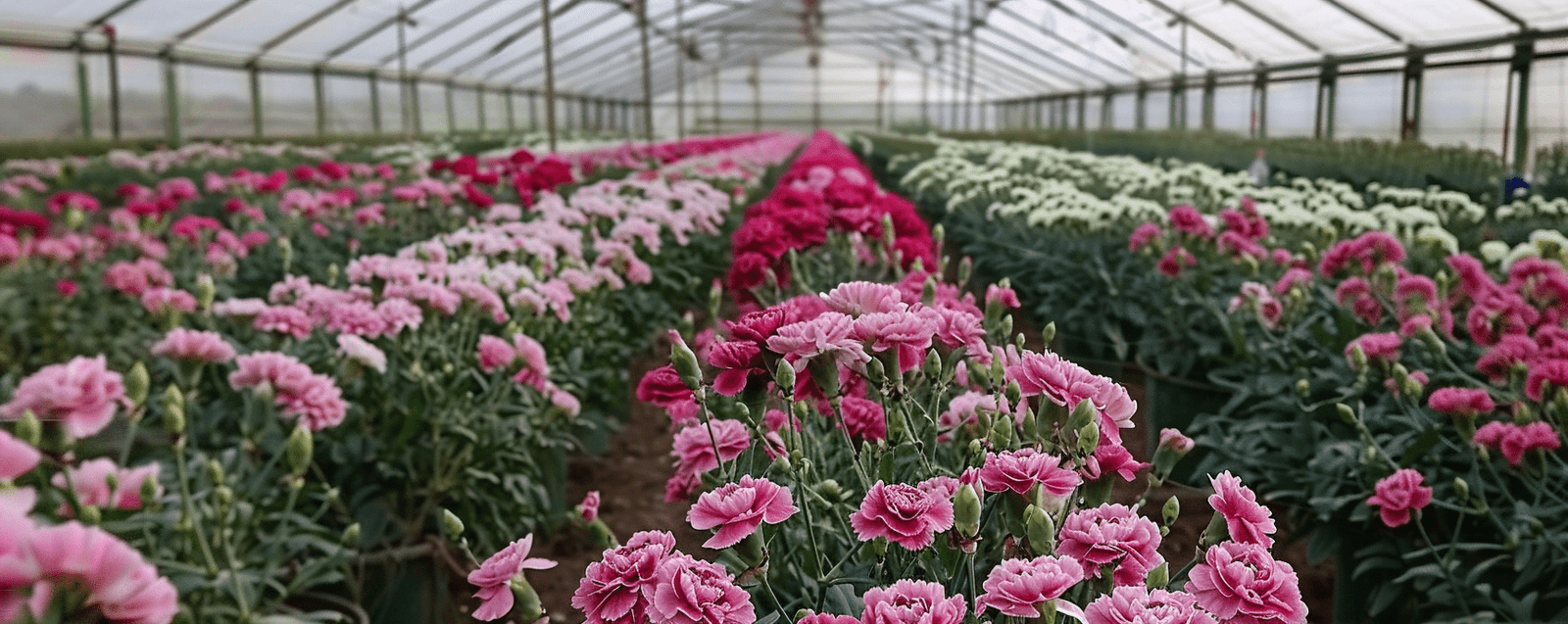
Have you ever wondered why store-bought carnations rarely smell as good as the ones growing in your grandmother’s garden? Or have you tried growing them yourself but encountered wilting, diseases or poor flowering? What if I told you that in a greenhouse you can create the perfect microclimate for these flowers and enjoy their beauty all year round? This is not just a dream, but a real opportunity, available even to beginners if you approach the matter wisely. In this article, I will reveal all the intricacies of growing carnations in a greenhouse: from choosing a variety to harvesting. We will go through each stage with technical data, practical examples and solutions to the most common problems. This guide is for those who want not only to try, but to achieve a stable, professional result. Ready to dive into the world of carnations? Then let's get started!
Why are carnations in a greenhouse profitable and promising?
Carnation (Dianthus) is not just a beautiful flower, but a real find for gardeners and entrepreneurs. It is valued for its bright colors, durability when cut (up to 20-30 days in a vase) and pleasant aroma, which varies from spicy to sweetish depending on the variety. But growing it in open ground is constant stress: spring frosts below -2 °C kill young plants, summer heat above +30 °C dries out buds, and autumn rains provoke fungi. A greenhouse solves these problems and opens up new horizons. Let's figure out what you get by choosing greenhouse cultivation:
- Microclimate control. You set the temperature (optimally +15–18 °C during the day), humidity (60–70%) and lighting (10,000–15,000 lux), excluding the influence of the weather. This means that your carnations will not suffer from sudden hail or night frosts.
- Year-round flowering. With heating and lighting, you can pick flowers even in December or February, when demand for cut flowers is especially high before the holidays.
- Protection from diseases and pests. In closed ground, the risk of infection with fusarium or attack by aphids is reduced by 50–70% compared to outdoors, if sanitary standards are observed.
- Profitability. One bush of the Shabo carnation produces 5-10 flower stalks per season. With a planting density of 25 plants/m² and a retail price of 10-15 UAH per stem, you can earn 12,500-18,750 UAH per cycle from 10 m².
Our the company offers greenhouses, created for such tasks. Polycarbonate 4–10 mm thick with thermal insulation of 1.5–2.0 W/m² K retains heat even at -20 °C outside, and the frame made of galvanized steel (section 20x20 mm or 25x25 mm) withstands snow loads of up to 240 kg/m². This is an ideal base for carnations in any region of Ukraine — from Chernivtsi to Mariupol.
What carnations to choose for a greenhouse?
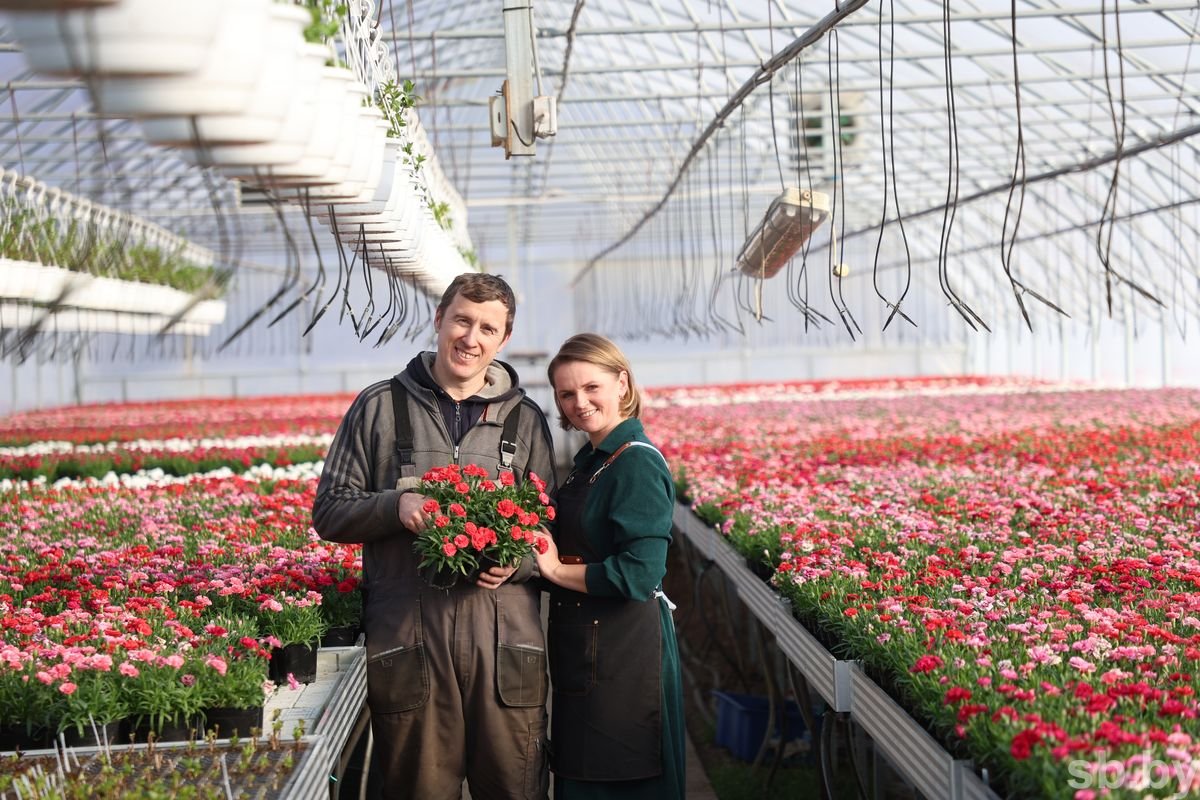
Carnations are a whole family of plants with different characteristics. There are garden carnations (Dianthus caryophyllus), which are most often grown for cutting, Turkish carnations (Dianthus barbatus) with lush inflorescences for decoration, and Chinese carnations (Dianthus chinensis), compact and bright. For greenhouses, experts recommend garden carnations - they are better adapted to closed ground and produce long, strong flower stalks. But success depends on the variety. Here is a detailed analysis of the best options:
- "Shabo"
- Characteristics: height 50–60 cm, flowers 6–7 cm in diameter, double or semi-double, palette from white to burgundy.
- Features: flowering 5-6 months after sowing, requires 14-16 hours of light per day.
- Pros: highly decorative, durability when cut (up to 25 days).
- Disadvantages: sensitive to over-watering.
- "Grenoble"
- Characteristics: stems 40–50 cm, flowers 5–6 cm, double, aroma with a hint of cloves (spice).
- Features: resistant to humidity fluctuations (50–80%), blooms in 4.5–5 months.
- Pros: Suitable for winter growing with 10-12 hours of light.
- Disadvantages: requires careful pruning of lateral shoots.
- “Margeurite”
- Characteristics: height 30–40 cm, flowers 5 cm, simple or semi-double, bright shades (pink, red, yellow).
- Features: early variety, flowering after 4 months, photoperiod 12–14 hours.
- Pros: fast growth, less maintenance.
- Cons: flowers are smaller than those of “Shabo”.
Technical nuance: pay attention to photoperiod. Long-day varieties (16-18 hours of light) are best planted in spring or summer, short-day varieties (10-12 hours) - in autumn or winter. A beginner's mistake: buying seeds without taking these parameters into account. The result is elongated stems and few buds. Check the description on the packaging and buy seeds from reputable producers (for example, "Syngenta" or "Hem Zaden").
When to plant carnations in a greenhouse?
Planting time isn't just a date on the calendar, but a strategy that depends on your resources and goals. Carnations can be grown from seeds, cuttings, or seedlings, and each method has its own timing. Let's break it down:
- Sowing seeds
- Spring: February-March. The goal is flowering in July-August. Soil temperature +15 °C, air +20–22 °C. Suitable for unheated greenhouses in southern regions (Odessa, Kherson).
- Autumn: August-September. Flowering - January-February. Heating (power 100-150 W/m²) and illumination (150 W/m²) are required.
- Data: seed germination at +21 °C is 85–90% in 7–10 days.
- Cuttings
- Summer: May-June. Rooting takes 20-25 days at 80% humidity and +18-20 °C. Flowering occurs in 3-4 months.
- Example: a gardener from the Kyiv region rooted 100 cuttings of “Shabo” in June, and in September collected 450 flower stalks.
- Transplanting
- Spring: April-May. Soil temperature +15 °C, air +16–18 °C. Seedlings with 4–6 leaves are transplanted at intervals of 15x20 cm.
- Winter: December-January (in heated greenhouses with 12-14 hours of lighting).
Technical parameters: for winter cultivation, the minimum temperature at night is +10 °C, otherwise growth will slow down by 30–40%. Greenhouses NovaTeplica with polycarbonate 6–8 mm and a thermal conductivity of 3.9 W/m² K allow you to maintain heat with minimal costs (for example, a 1 kW heater will heat 10 m² at -15 °C outside).
How to prepare a greenhouse and soil?
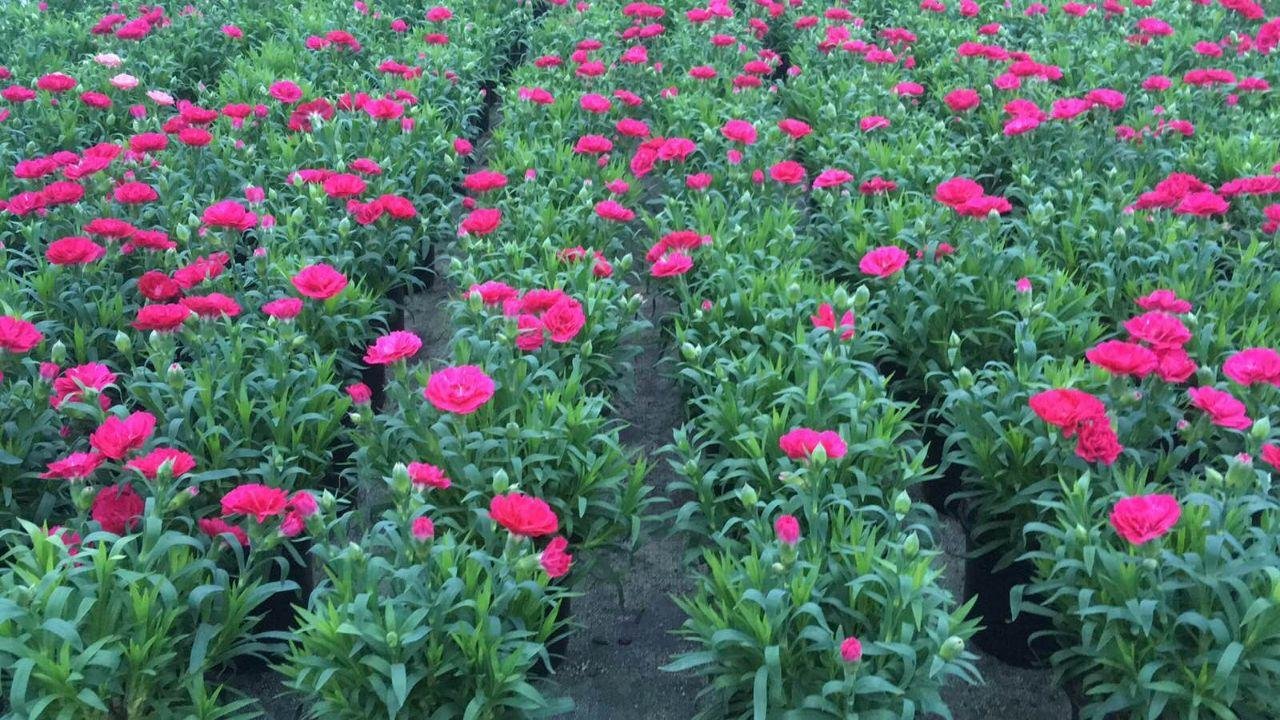
Preparation is the foundation of success. Without it, even the best seeds will not produce results. Let's look at each aspect.
Preparing the greenhouse
- Disinfection.
- Purpose: to destroy fungal spores (fusarium, gray rot) and bacteria.
- Method: treating the walls and frame with a solution of copper sulfate (100 g per 10 l of water, consumption 1 l/10 m²) or formalin (2%, 0.5 l/m²). Then - ventilation for 48 hours.
- Example: a farmer from Poltava skipped this step and lost 20% of seedlings due to mold.
- Lighting.
- Requirements: 10,000–15,000 lux for growth, 12–16 hours of light per day.
- Equipment: phytolamps (power 100–150 W/m², spectrum 400–700 nm, suspension height 50–70 cm). For example, a 100 W lamp illuminates 1 m².
- In winter: without illumination, the stems stretch out, the flowers become smaller (the diameter drops from 6 cm to 3–4 cm).
- Ventilation.
- Standard: air exchange 20–30 m³/h per 1 m². Humidity above 80% provokes fungi.
- Solution: vents (10–15% wall area) or exhaust fans (power 50–100 m³/h per 10 m²).
- NovaTeplica greenhouses have adjustable vents with an opening pitch of 10–15 cm.
Soil preparation
- Compound.
- Mixture: turf soil (3 parts), peat (2 parts), sand (1 part) + 10% perlite (fraction diameter 2–5 mm) for drainage.
- Alternative: ready-made substrate “Klasmann” with pH 6.0 and EC 0.5–1.0 mS/cm.
- Acidity.
- Optimum: pH 6.0–6.5.
- Correction: at pH >7.0, add sulfur (50 g/m², decrease by 0.5 units), at pH <5.5, add lime or dolomite flour (200–300 g/m², increase by 0.5–1 unit).
- Test: use a pH meter (price 300-500 UAH) or litmus strips.
- Fertilizers.
- Dose: 40 g/m² superphosphate (P₂O₅), 20 g/m² potassium sulfate (K₂O), 5 kg/m² rotted compost (NPK 0.5-0.3-0.4).
- Prohibition: fresh manure (releases ammonia, which burns the roots).
Example: a gardener from Ternopil added 10 cm of expanded clay under the soil (fraction 5–10 mm) and reduced losses from root rot from 15% to 2%.
How to plant carnations correctly?
The planting technique determines how quickly you will see flowers. Let's look at two main methods with details.
Sowing seeds
- Seed preparation.
- Problem: Low germination (60–70%) due to hard shell.
- Solution: soak in “Zircon” (2 drops per 100 ml of water) or “Epin” (1 ml per 1 l) for 12–18 hours at +20 °C. Germination increases to 85–90%.
- Drying: until loose (20–30 minutes in air).
- Planting diagram.
- Depth: 0.5–1 cm (deeper – growth slows down for 5–7 days).
- Distance: between furrows 20 cm, between seeds 2–3 cm (after thinning – 15 cm).
- Density: 25–30 plants/m² for cutting.
- Conditions.
- Temperature: +20–22 °C before germination, then +16–18 °C.
- Humidity: 70–80%. Cover with film or agrofibre (density 17 g/m²) until sprouts appear (7–10 days).
- Watering: 0.5 l/m² with warm water (+25 °C) from a watering can with a fine sieve.
Planting seedlings or cuttings
- Seedling.
- Age: 4–6 leaves (40–50 days after sowing).
- Technique: transshipment with a lump of earth (diameter 5–7 cm), root collar at ground level.
- Spacing: 15x20 cm (33 plants/m²).
- Cuttings.
- Preparation: cut 5–7 cm shoots with 2–3 nodes from the mother bush (in the morning, with sharp pruning shears).
- Rooting: in a mixture of sand and peat (1:1), at an angle of 45°, depth 1–2 cm. Humidity 85%, temperature +18–20 °C.
- Watering: 100 ml/plant once every 3 days. Roots appear in 20–25 days.
Mistake: deepening the root collar by 1-2 cm. This increases the risk of rot on 50%. Example: a farmer from Zhitomir lost 30% seedlings due to this oversight.
How to care for carnations in a greenhouse?
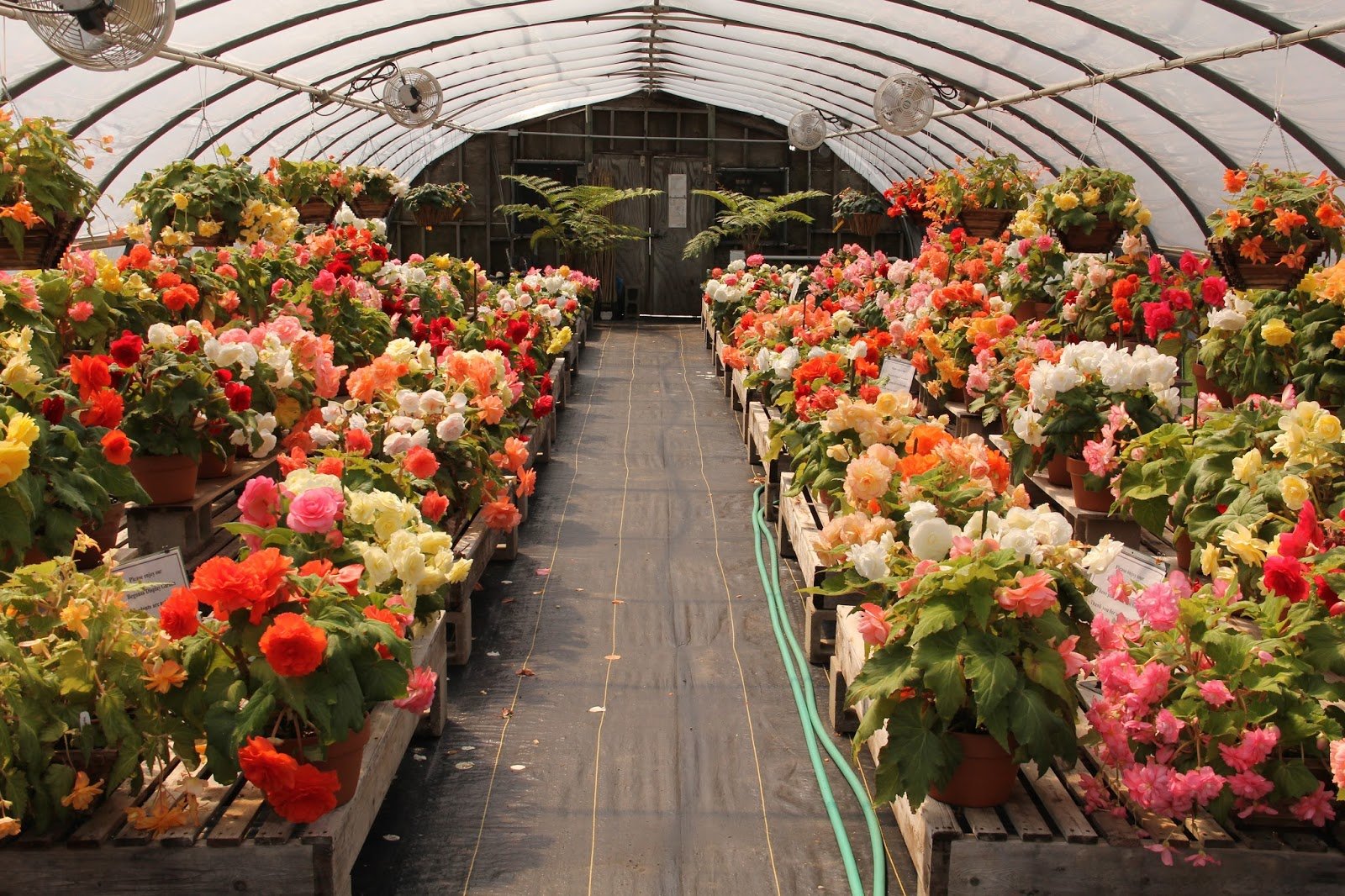
Grooming is a balance of science and attention. Let's examine each aspect with technical precision.
Temperature and humidity
- Temperature:
- Day: +15–18 °C. Exceeding +25 °C reduces the size of flowers by 20–30% and accelerates the aging of buds.
- Night: +10–12 °C. Below +8 °C — growth stops, above +15 °C — stems weaken.
- Regulation: heaters (1 kW per 10 m²) in winter, ventilation in summer.
- Humidity:
- Optimum: 60–70%.
- Above 80%: the risk of fusarium increases 3 times. The solution is fans (50 m³/h per 10 m²).
- Below 50%: leaves turn yellow. Solution: humidifiers (capacity 0.5 l/h per 10 m²).
Watering
- Norm:
- Summer: 5–7 l/m² once every 5 days (soil moisture 60–70%).
- Winter: 3–4 l/m² once every 7–10 days.
- Method: drip irrigation (pressure 1.5–2 bar, flow rate 2 l/h per point). Manual watering – under the root, 0.3–0.5 l/plant.
- Water quality: pH 6.0–7.0, temperature +20–25 °C. Cold water (+10 °C) slows down growth by 10–15%.
Lighting
- Intensity: 10,000–15,000 lux. Below 8,000 lux – flowering is delayed by 2–3 weeks.
- Duration: 12–16 hours per day. In winter — phytolamps (power 120 W/m², spectrum 620–630 nm for red light).
- Example: a gardener from Cherkasy increased the lighting from 8 to 14 hours - the buds grew from 4 to 6 cm.
Top dressing
- Growth stage:
- 2 weeks after emergence: 10 g/m² nitrogen (N) + 15 g/m² phosphorus (P) in the form of nitroammophoska (NPK 16-16-16).
- Monthly: 5 g/m² urea for foliage.
- Before flowering:
- 20 g/m² potassium (K) + 10 g/m² phosphorus (P) in the form of potassium sulfate and superphosphate.
- Microelements: boron (1 g/m²), magnesium (1 g/m²) for bright flowers.
- Example: a solution of “Kristalon Universal” (15 g per 10 l of water, consumption 1 l/m²) increased the yield by 25% every 10 days for a farmer from Vinnitsa.
Pruning and shaping
- Purpose: one flower stalk on a stem for cutting.
- Technique: remove lateral shoots below the 5th node (cut at an angle of 45°, sterile tool). Leave 6-8 pairs of leaves under the bud.
- Frequency: once every 2 weeks. Without pruning, the bushes waste energy on extra branches, reducing the quality of flowers by 30%.
Protection from diseases and pests
- Fusarium (wilt):
- Signs: Brown spots at the base of the stem.
- Prevention: “Previkur” (20 ml per 10 l of water, watering 1 l/m² once a month).
- Treatment: “Fundazol” (10 g per 10 l, 0.5 l/m²).
- Aphid:
- Signs: curled leaves, sticky coating.
- Solution: “Aktara” (1.5 g per 5 l of water, spraying once every 15 days).
- Spider mite:
- Signs: fine webbing, yellow spots on leaves.
- Solution: “Fitoverm” (2 ml per 1 l of water, 0.2 l/m²).
Mistake: Not loosening. A crust on the soil reduces oxygen access to the roots on 20%. Loosen to a depth of 3-5 cm once a week.
When and how to collect carnations?
The cut is the culmination of your work. Here's how to do it right:
- Duration: 4-6 months after planting (depending on the variety). The buds are open at 50-70% (for “Shabo” — 2-3 petals are fully visible).
- Time: morning (8:00–10:00), after the dew has dried, but before the heat.
- Technique: cut at a height of 40–50 cm from the ground, at an angle of 45°, below the 5–6th node. Use sharp pruning shears (0.5–1 mm blade).
- Storage: in water (+2–4 °C) with 1% sugar and 0.01% citric acid. Shelf life: 20–30 days.
- Example: a farmer from Odessa collected 600 stems from 20 m² in one season, cutting them in the half-opening phase.
Typical problems and their solutions
- Yellow leaves.
- Causes: overwatering (soil moisture >80%) or nitrogen deficiency (N <5 mg/kg soil).
- Solution: reduce watering to 3 l/m², add urea (5 g/m²).
- Small flowers.
- Causes: low light (<8,000 lux) or potassium (K <10 mg/kg).
- Solution: increase lighting to 12,000 lux, feed with potassium sulfate (15 g/m²).
- Root rot.
- Reason: poor drainage (water stands for >12 hours).
- Solution: a 5–10 cm layer of expanded clay (fraction 5–10 mm) under the soil.
Example: a gardener from Kharkov added drainage and reduced losses from 25% to 5%.
Why are NovaTeplica greenhouses your best choice?
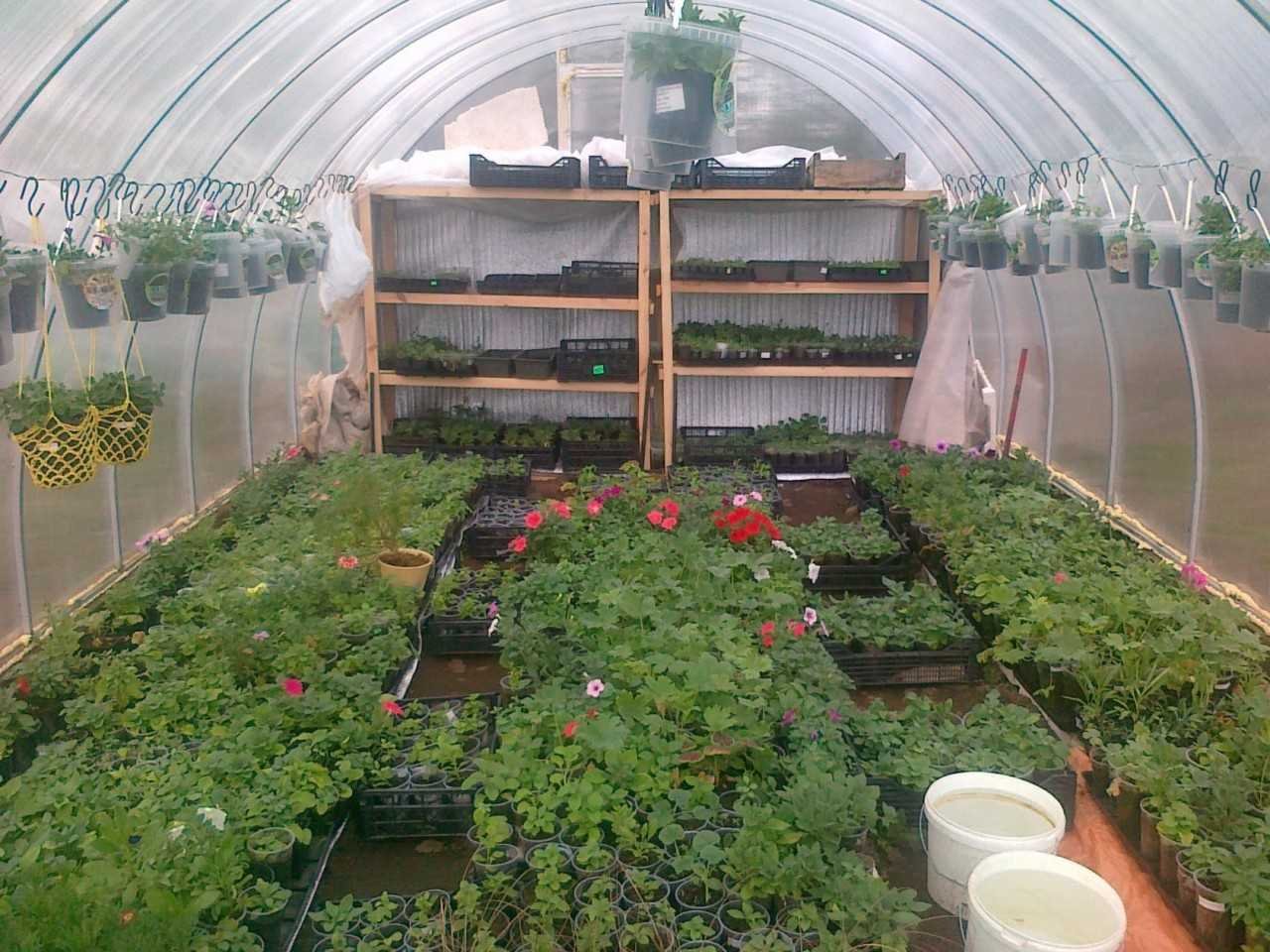
Carnations need a reliable greenhouse, and NovaTeplica provides it. Their models: from 3x6 m (18 m², for home) to 6x20 m (120 m², for business). Polycarbonate with a density of 0.7-0.9 kg/m² with a UV filter (service life of 10-15 years), a frame made of 1.2 mm steel (load up to 300 kg/m²). Ventilation, heating, delivery throughout Ukraine - from Sumy to Nikolaev. Example: a 4x8 m greenhouse cost 25,000 UAH and paid for itself in 2 seasons.
Conclusion: your carnations are already on the horizon!
Growing carnations in a greenhouse requires precise calculations and a little patience. Choose a variety, prepare the conditions, follow the recommendations - and your flowers will become a decoration of your home or a source of income. Do not be afraid of mistakes: every failure teaches. Start right now, and soon your greenhouse will shine with colors. Any questions? Write.





